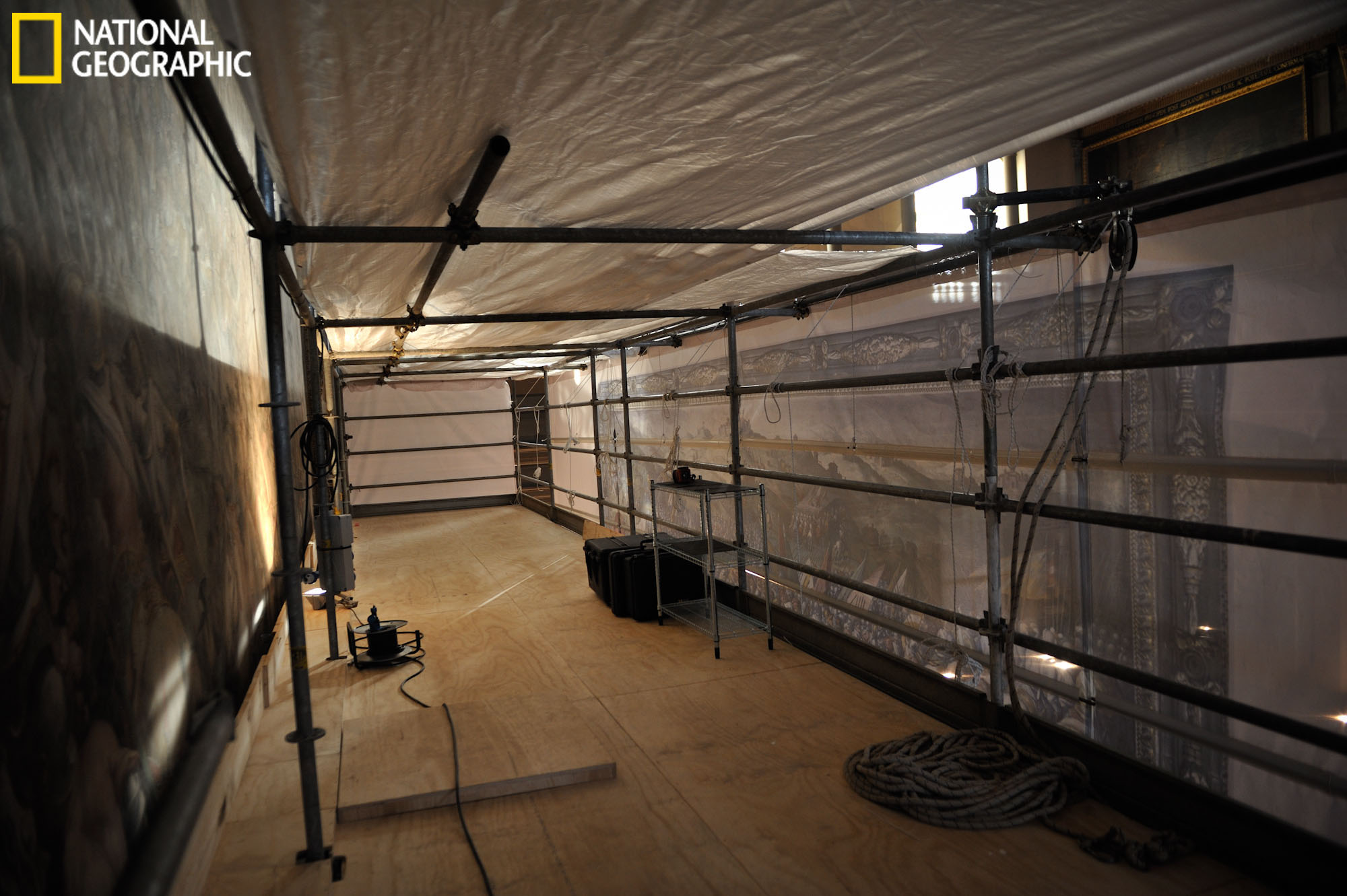In Search of Leonardo's Lost Painting
[Note: This article is reprinted with permission from the National Geographic Society website; to follow future NGS updates on the Battle of Anghiari project, visit http://www.nationalgeographic.com/field/projects/anghiari/.]
|
San Diego, Calif., Dec. 2, 2011 — Around midnight, the narrow streets and broad squares of central Florence empty except for a few carousers, lights flicker in the windows of an upper floor windows of the Palazzo Vecchio, the imposing stone-fronted building that serves as City Hall. Inside some two dozen people, chiefly scientists and engineers from the University of California at San Diego, Italian art conservators, and members of a National Geographic Television crew, are moving up and down a four-story scaffolding erected in the grand Salone de Cinquecento, the Hall of Five Hundred. The scaffolding faces a large mural of clashing soldiers painted in 1563 by Giorgio Vasari, a favorite son of Florence who redesigned the Palazzo and painted the huge patriotic frescoes that line its upper walls. However, it’s what might lie hidden behind the Vasari mural that is causing all the middle-of-the-night commotion.
It’s chilly inside the grand hall, but hardly anyone notices. Every night this week, a kind of slow-motion, yet fevered search unfolds, the culmination of a years-long effort to determine if Leonardo Da Vinci’s “Battle of Anghiari,” last seen some 450 years ago, is hidden behind the Vasari fresco. Principal investigator Maurizio Seracini and his UCSD troops, a collection of mostly grad students clad in white lab coats and versed in high-tech imagery and material analysis, are huddled around a small hole drilled above the right kneecap of a soldier painted on the wall. Seracini, who is based at the UCSD division of the California Institute for Telecommunications and Information Technology, has inserted an endoscope into the roughly six and a half inch long space and now an amazingly clear image appears on a small monitor. The fiber-optic probe seems to fly through space as it passes clouds of puffy mortar and comes to rest on a hard white space, as pocked as the moon. Dust particles fly about. Seracini keeps pointing out those floating wisps. TV director Max Salomon and his crew press close. From the image Seracini, as excitable as the patrician, white-haired Florentine native seems to get, announces in a level voice that the image proves a gap truly exists between the Vasari wall and the building’s outer wall, in this case, only a fraction of an inch, but wide enough to accommodate the Leonardo mural. Radar and thermographic surveys done in previous years had shown a gap, the only one in the hall and one possibly constructed by Vasari to protect the Leonardo mural. Now a high-resolution fiber optic image appears to confirm it.
|
The analysis will be slow in coming, as Seracini’s engineers and scientists are as cautious and painstaking in their work as the conservators. In the meantime another night approaches and with it the prospect of another entry point and images that will attract yet again a hushed midnight crowd on the scaffolding.
Related Links
National Geographic News Watch
Media Contacts
Media Contact: Tiffany Fox, (858) 246-0353, tfox@ucsd.edu


